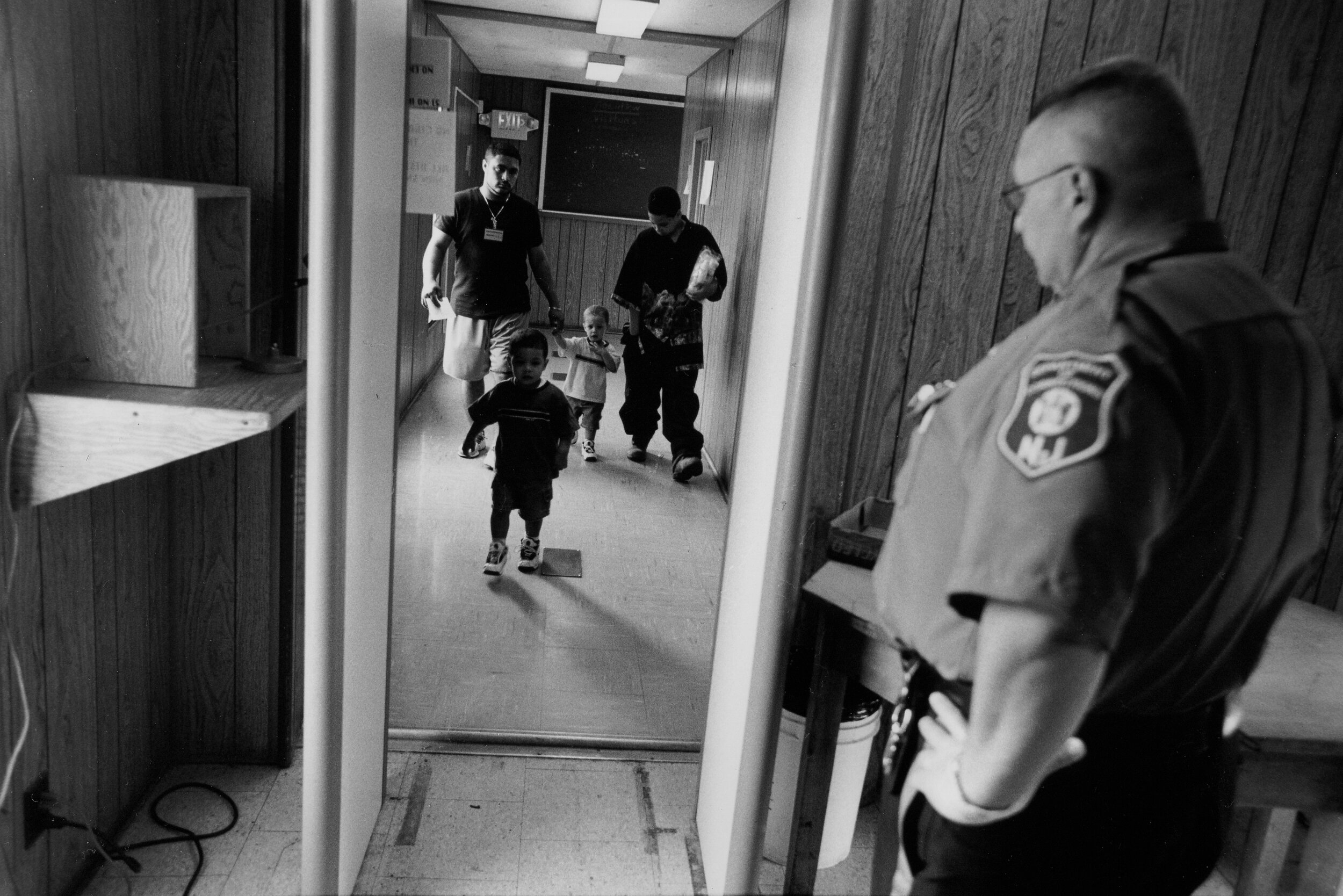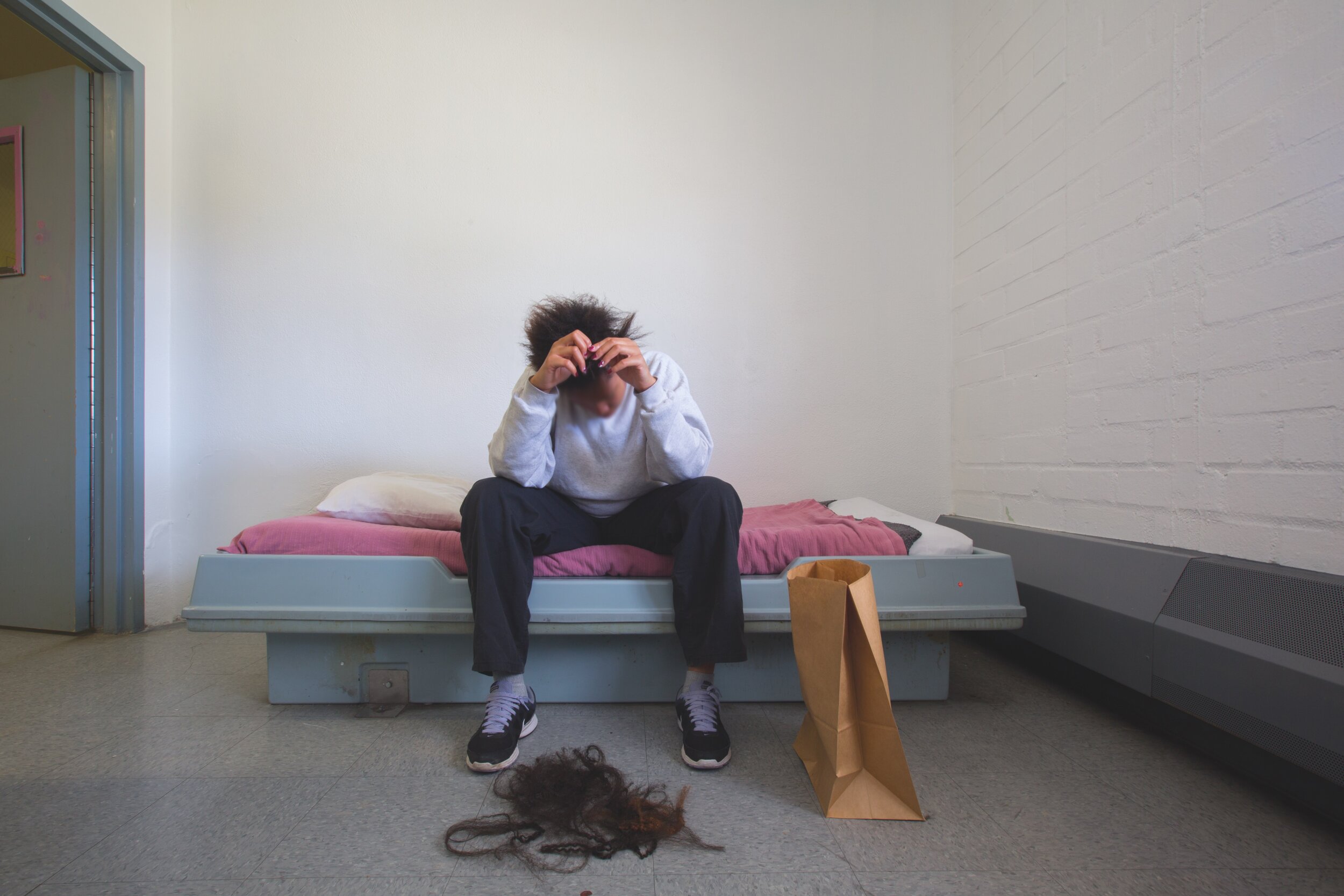Incarcerated men return from working in the fields, Louisiana State Penitentiary, 2011. Gerald Herbert | AP
EXCEPT AS PUNISHMENT FOR CRIME
By Paul Dawson
What an incredible time it must have been in these United States of America, when the news came out that slavery had been abolished! A thing of the past! Undoubtedly, there were smiles, tears, and a new sense of hope for millions of Americans; for, they thought, if America could pull something like this off, the sky was the limit!
Most decent people were happy. Others, who were either racist, or plainly felt that Black people did not deserve the opportunity to pursue the same liberties as whites, were angry with the decision. Even murderous. But there was one group of people who were downright scared to death—the slaveowners, plantation supervisors, and slavery profiteers. This group knew that their livelihood had just been ripped right out of their hands. The local and state economies would feel the impact just as hard. In their minds, it was as if the United States government just told all dairy farmers they could no longer own cows. But the light at the end of the tunnel for them was the 13th Amendment, which states:
Neither slavery nor involuntary servitude except as a punishment for crime whereof the party shall have been duly convicted, shall exist within the United States, or any place subject to their jurisdiction.
Simply put, there is no such thing as slavery in the United States, unless you commit a crime. Then you are enslaved. That is your punishment. Slavery. Don’t believe me? Re-read the amendment. This was, and still is, music to the ears of the groups that were scared to death. Now they could become the ones with the smiles and tears of joy. A renewed sense of hope. Starting from practically scratch, ex-slave owners and local and state government officials met with wealthy ex-slave profiteers to lay the groundwork on how to get back on their feet. In my research, most of the records of these meetings were held in secret. But is it not a no-brainer that the workforce could now be made up of convicted criminals, since that is the only form of slavery the constitution allowed?
At the time there were not a lot of prisoners compare to today. Definitely not enough for a productive workforce. This meant that this group had to identify and target their ideal criminal (or, future slave), and then change and/or create a justice system that would ultimately lead to mass incarceration. This would mean that Black people and poor people would become the targeted group.
Low and behold, arrests started rising, convictions were swiftly handed out, and the prison populations all over the nation began to skyrocket. A quick study into wealth origins in nearly all 50 states and U.S. territories shows direct links to slavery or transported wealth, where a slave owner or profiteer got wealthy in one state and moved to another to ‘franchise’ their operation accordingly. It is now to the point where the United States has less than 5% of the world’s population, but holds upwards of 20% of Planet Earth’s prisoners. As the our global population stronghold goes down, our prisoner population goes up. This is the case, even as the Department of Homeland Security shows that the National Crime Rate (NCR) has been declining for over a decade; although you could never tell by watching or reading the news.
Mass incarceration has worked very well for those with a vested interest in maintaining slavery, and at the writing of this article there are 2.3 million people who are incarcerated. There is another 4 million on probation, parole, or other forms of “supervision” which is a form of convicted punishment by itself, and can easily be used by enforcers to move the individual from one form of exploitation and punishment (supervision), to an even more oppressive form (incarceration).
Inmates at a factory in a federal prison in Alabama, April 2020. Evan Vucci | AP
Once the slave class has been identified and targeted, and the justice system established who will or will not be put into slavery and for how long, it was time for slavery profiteers—or, as is more politically correct in 2020, prison profiteers—to make some money. Along with the 13th Amendment, state governments have jumped on board with their own language in law such as Oregon’s Measure 17, which mandates that ALL adults in custody (AIC’S) must work or be subject to disciplinary action. I have seen hundreds of AIC’S sent to the disciplinary segregation unit (DSU), which the VERA Institute has deemed a form of torture and abuse, for refusing to work in the kitchen. Many have social anxiety or anger issues, or simply want to avoid the loud, chaotic, and mostly violent environment that a maximum security cafeteria presents. Prison officials need no excuse to say, with a smile, “off to DSU you go!”, as they place another person in handcuffs. Other more lenient officers may issue a, “program failure.” Being told you are a failure is not a confidence builder for anyone, and it can also cause an AIC to lose good behavior time (meaning they stay in prison longer) lose access to privileges such as outdoor recreation, phone access, and visitations that are vital to establishing and maintaining relationships with someone’s support systems.
The list goes on, but the message gets across, “Work when we tell you, or be punished!” These words are the motto of slavery. Then and now. If you were to take the black and white (no pun intended) image of slavery in the United States you have in your head from before the 13th Amendment, then add color, airbrush it and add a couple filters, it would look like the modern prison system we have right now. Prison has become the #1 industry in many states, including Oregon; replacing industries such as timber and farming. I am often asked where all the money goes. The answer is easier to find than you might think. The largest beneficiaries of prison labor are the Corrections Corporation of America (CCA) and the GEO Group. In 2014 and 2015 these two companies raked in nearly $4 billion dollars. They have not slowed down since, and as I await financial reports, it is safe to assume that they still pull in billions each and every year.
These publicly traded companies make the entire operation manageable. However, there are hundreds of lesser-known companies making millions of dollars from slave labor in the United States. Companies such as Turner Construction, Access Corrections, GTL/Telmate, ClearTunes, GPX, BI Incorporated, Bob Barker (no game show host connection), and state contracted agencies such as call centers, garment factories, flag shops, sign shops, furniture factories, and so much more. All these companies are doing contracted work for state agencies and outsourced contracts. We recently received CenturyLink as our phone provider at Oregon State Penitentiary.
A look at a prison call center shows nearly every similarity between itself and a call center outside prison walls—except the pay. A call center in prison may pay $200 a month whereas a call center outside of prison may pay $2,000 a month. This means a call center owner can shut down his operation and move into a prison where they will get ten prisoners for the price of one free citizen. Prison administration will try to justify this by claiming that prisoners don’t have bills. This argument falls apart in 4 key areas:
Prisoner bills are state and/or federally funded by taxpayers.
Not everyone is working in order to pay bills whether in prison or not.
95% of all prisoners are eventually released, and a more prosperous person is less likely to end up in prison, or back in prison, than an impoverished one.
Telling the person at your mercy they don’t deserve adequate pay because you are providing them services that they don’t want, is the main manipulative tool of slavery aside from violence. It is easy to see a slave master saying the same thing to a slave enquiring about additional funds, food, clothing, etc.
In closing, this is a matter of perspective. Some will relate if they have been incarcerated, abused, or imprisoned in some way. Others will say, “Don’t like it? Then don’t break the law.” This perspective is an easy way to avoid the reality that there is a serious mental health, drug/alcohol, and PTSD problem in our country. Prison slavery is the result of economic disparities and racial division intertwined with prison profiteering conducted through heavy lobbying in order to enslave as many people as possible. While crimes can be harmful, and need to be addressed, examining the roots and addressing the causes of society's problems will always be more a effective way to rehabilitate people, rather than enslaving them.
Paul Dawson is currently serving a 14-year sentence at Oregon State Penitentiary, he is a student at the University of Oregon and a published Author. He can be reached by mail.
Paul Dawson #14467777
2605 State Street
Salem, OR 97310





